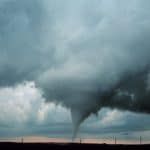Barely lethal
By Charles P. Blair | June 12, 2013
The June 7th arrest of actress Shannon Richardson for allegedly sending ricin-tainted letters to New York Mayor Michael Bloomberg and President Barack Obama comes after two other ricin-related incidents earlier this year. In May, five letters testing positive for the toxin were mailed from Spokane, Washington, with one each bound for an Air Force base, a local judge, and the Central Intelligence Agency, and two addressed to the White House. All were intercepted and authorities arrested a suspect. In April, another alleged perpetrator mailed letters containing ricin to a US senator, a Mississippi judge and, once again, the White House. In short, more individuals have used ricin in the past three months than in any three-month period ever before.
So what explains ricin's growing use? The answer is two-fold.
First, though the toxin is difficult to weaponize for mass casualty attacks, it is relatively easy to produce on a small scale. The ease of acquisition and manufacture strengthens the allure of the poison for those seeking revenge or public attention.
Second, ricin exerts a strong cultural pull on its users. Some of this has to do with its reputation as a do-it-yourself weapon, which makes it appealing to those who believe in hardcore self-reliance. But ricin has also acquired a certain glamour over the years, deployed in fictional television shows and as a real-world tool of spy craft and assassination. Ricin's iconic status in US culture was cemented decades before Richardson, a pregnant Texan who has played bit parts in shows like Vampire Diaries and Walking Dead, allegedly committed her crimes.
Attempts to weaponize. For at least four millennia the seeds of the castor bean plant — Ricinus communis — found benevolent use, their oil extracted and used as a lubricant and dye. Ricin is the material left over after the oil is removed, but it wasn't until the late 1880s that anyone explored using it as a toxic substance. In 1903 the Journal of the American Medical Association detailed the results of the US Army's first animal experiments using ricin.
Ricin is non-toxic when exposed to skin alone, potentially deadly when ingested, usually fatal when injected, and most lethal when inhaled — but it is very difficult to deliver as an aerosol. It affects human cells, with ingestion resulting in fever, diarrhea, and gastrointestinal hemorrhaging. In cases of injection and inhalation, circulatory collapse typically precedes death.
Today ricin is a banned substance under international law, falling under the purview of both the Biological and Toxin Weapons Convention, which entered into force in 1975, and the Chemical Weapons Convention, which entered into force in 1997. For many decades, governments sought ways to use ricin militarily.
During the World War II era, some Allied countries compared ricin to the chemical warfare agent phosgene, that period's standard inhalation-induced casualty agent. When assessing such chemical weapons, one common metric used is the amount of the substance needed to kill half the population exposed, commonly referred to as an agent's "lethal dose 50" percent. Ricin's appeal over phosgene arose logically: Far less of the former was needed to achieve the same lethal dose 50 as the latter. For example, according to the Stockholm International Peace Research Institute (SIPRI), the lethal dose 50 for phosgene for a square mile was 600 tons—for that same for ricin, it was 90 tons. The United States investigated ricin's candidacy as a biological warfare agent, and during World War II, SIPRI notes, US pilot plants produced 1,700 kilograms of ricin, roughly one-fifteenth of the amount needed to cover a square mile.
The successful production and weaponization of other chemical agents, though, soon diminished interest in ricin. When compared to agents such as botulinum toxin and Bacillus anthracis, which causes the disease anthrax, ricin is not very useful given the copious amounts required to achieve significant battlefield goals. For example, it would require eight metric tons of aerosolized ricin to produce a lethal dose 50 over 38.6 square miles. In contrast, only 8 kilograms of aerosolized botulinum toxin — which paralyses the muscles and is also known as Botox and used in cosmetic procedures — could accomplish the same job. Iraq, likely the last country to seriously consider ricin for military use, chose instead to produce another biological warfare agent before its invasion of Kuwait in 1990.
Though it is superfluous as a battlefield weapon, states nevertheless found other nefarious uses for ricin. Because its action is delayed and difficult to detect both pre- and post-mortem, ricin is considered an excellent weapon for assassination. In 1978, Bulgarian secret police assassinated the Bulgarian dissident Georgi Markov in London using a weaponized umbrella capable of injecting a tiny ricin-bearing pellet. A month earlier in Paris, Bulgarian state operatives attempted to kill a defector using the same method. Both incidents, along with unconfirmed reports of similar attempts, added to ricin's image as a silent and deadly poison.
Pop culture popularity. States long ago abandoned ricin as a biological warfare agent, and non-state actors have had little success using it to generate casualties. So what explains the continued plotting, acquisition, and use of the toxin? I examined three robust data sets to find answers.
Combining open-source information with qualitative studies and my own investigations, I reached three conclusions.
First, individuals and groups engage in ricin-related activities with a variety of objectives. For example, data to be published by START (National Consortium for the Study of Terrorism and Responses to Terrorism) in 2014 finds that out of 20 incidents from 1990 to 2011, two perpetrators were motivated by a "personal or professional grudge;" four acted to "fulfill individual objectives," believing they were part of a larger, often ideological purpose; and six sought "to promote single issues." The motivations of three perpetrators were unknown.
Second, the Federation of American Scientists' study "Ricin and the Extreme Right-Wing" shows that right-wing extremism has been the most common ideological motivation behind non-state ricin incidents for more than three decades. The unpublished report finds that of the 37 ricin incidents since 1983, 16 involved individuals or groups adhering to an extreme right-wing ideology. (Non-right-wing lone actors accounted for another six incidents, Islamist extremist groups for five, and an "ethno nationalist group" for one.) Only two of these far-right perpetrators are classified as "formal organizations," while three are "unaffiliated cells" and the remaining 11 are lone actors.
Ricin's reputation as an exotic and lethal poison that can be easily procured make it attractive to elements of the extreme right wing, for whom autonomy is a core belief. They embrace the idea of "leaderless resistance," a term coined 40 years ago by Louis Beam, a Ku Klux Klan leader and seminal strategist still revered by the far right. Beam designed a "phantom cell" method of organization in which "all individuals and groups operate independently of each other and never report to a central headquarters or a single leader for direction and instruction," as he wrote in a 1983 essay. Ricin may not, in fact, be very effective at producing mass casualties, but it holds strong appeal as a weapon that such an independent person or cell could use.
Finally, ricin remains attractive because of its iconic role in pop culture. That's partly thanks to Walter White, the fictional antihero of the television drama Breaking Bad, who plays a chemistry-teacher-turned-drug-lord who concocts ricin as a murder weapon. The television shows Law and Order and Walker, Texas Ranger have also based episodes around ricin. State use of ricin is the stuff of James Bond films; besides the Bulgarian secret police's umbrellas, American spy Francis Gary Powers, who was shot down over Soviet territory in 1960, was rumored to keep a hidden cache of ricin to kill himself in case of capture. (The substance was actually saxitoxin, another deadly poison.)
The allegations that Richardson, an actress, used ricin in an act of marital revenge — authorities believe she was trying to frame her husband for the crime — only serves to enhance the toxin's anti-hero status. Despite almost no empirical data to support ricin's lethality in the hands of individuals, it is entrenched as the most popular poison in the American imagination. This growing mythology appears to have a strong correlation to the increase in plotting, production, and occasional actual use of the toxin. Ricin-related events have almost doubled each decade since the 1980s, and 2013 — not even half over — has already set a new record.
Fortunately, US security personnel and ricin detection machinery seem wholly up to the task of intercepting the toxin. This year's events may portend more widespread incidents, including copycat crimes, but they will likely remain non-lethal.
Editor's note: Columnist Charles Blair will lead a course on terrorism at George Mason University on July 25 and 26. Open to the public and media, the course will examine research methodologies, including those used in this column.
Together, we make the world safer.
The Bulletin elevates expert voices above the noise. But as an independent nonprofit organization, our operations depend on the support of readers like you. Help us continue to deliver quality journalism that holds leaders accountable. Your support of our work at any level is important. In return, we promise our coverage will be understandable, influential, vigilant, solution-oriented, and fair-minded. Together we can make a difference.
Topics: Columnists















